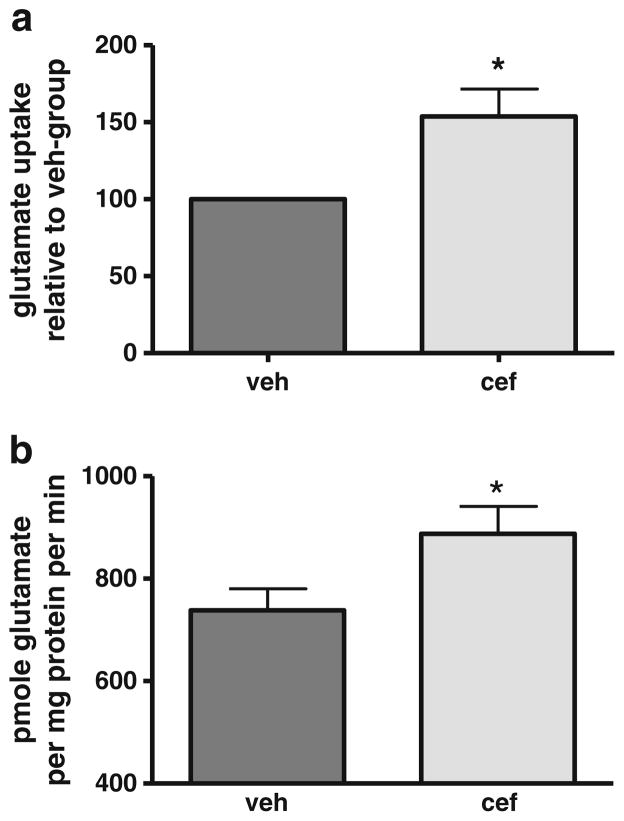Fig. 4.
Longevity of ceftriaxone enhancement of striatal glutamate reuptake. Four to eight-month-old male Sprague–Dawley rats were treated with 200 mg/kg ceftriaxone (cef) or saline (veh) for five or seven consecutive days. Glutamate reuptake was assessed and data collapsed for analysis in two time periods post-cef: a 1 and 4 days after last cef administration (seven consecutive days). Glutamate reuptake increased ~1.5-fold (154 % of veh) in cef group relative to reuptake in veh group (Student’s paired t test, *p <0.05, t =2.99, n =6). Mean±SEM increase: after day 1: 176±20 %; after day 4: 131±27 %. Data presented as percent difference in uptake in cef group vs. veh group. b 7 and 14 days after last cef administration (five consecutive days). Glutamate reuptake increased ~1.2-fold (122 % of veh) in cef group relative to reuptake in veh group (Student’s paired t test, *p <0.05, t =3.04, n =5). Mean±SEM increase: after day 7: 118±6 %; after day 14: 127±22 %. Data presented as total glutamate reuptake (picomole glutamate per minute per milligram protein) cef group vs. veh group

